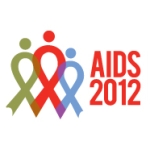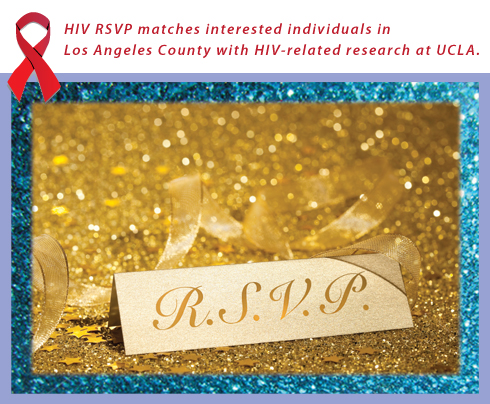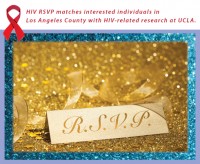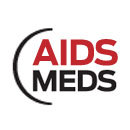
Author: Jeannie Wraight
as seen on HIVHaven.com
So you’d like to attend AIDS 2012 in Washington DC but you’re concerned it will be too expansive or you’d like to cut costs a bit? Before you write off the idea of attending this important conference or break open the piggy bank, read on and check out some of the cost saving measures that will make your dollars go further.
There are a lot of ways you can save money and still comfortably attend AIDS 2012.
Check back on HIV Haven as we’ll be looking for additional ways for you to save money. We’ll post them as they come up.
Fundraising and scholarships
The deadline for scholarship applications issued by the conference organizers, The International AIDS Society, has already passed. If you have applied for a scholarship, you will be notified, in early April of the scholarship boards’ decision.
Some AIDS organizations do offer full or partial scholarships to their clients, although in these tough economic times, they may be less obtainable then previous years. If you frequent a non governmental organization or AIDS service organizations, it does not hurt to ask if they have available scholarships or can contribute to your conference expenses.
You can also fundraise yourself. Chipin (www.chipin.com), is a safe, easy way to set up a fund that people can donate to. Send your chipin info along with a request for assistance to friends, family, co-workers and acquaintances, asking for small contributions. You can also post this information on your Facebook page or other social media venues. Ask local businesses to donate as well. You may find one wiling to sponsor you. In order to use Chipin, you must have a bank account as well as a paypal account.
Find other fundraising ideas on the internet. There are lots of sites that can give you tips and suggestions to raise funds. Among them are: http://www.fundraiser-ideas.net/There are many good ideas on this site. Click on the various links even if the titles don’t apply.
Hotel
Choosing a hotel can be the most important decision in cost cutting. When judging the price of a hotel, remember to take into account other associated costs that will add or subtract to your total budget.
For example, try to find a hotel that is on the AIDS 2012 website. http://www.aids2012.org/Default.aspx?pageId=319
These hotels offer shuttle service to and from the conference. There are various price levels based on distance and quality of the hotel. Since the shuttle is offered several times throughout the day, distance is less of an issue making hotels further away and cheaper, more acceptable. Always check out additional info on the hotel by going to their full website and reviewing hotel pictures and accommodation lists. Trip Advisors (www.tripadvisors.com) is a must to get a more accurate account of the type of overall experience you will have at a particular hotel.
When looking for the best hotel for you, enquire whether the hotel offers free breakfast. Many hotels and motels offer continental breakfast. This includes some or all of the following: coffee/tea, juice, toast, donuts and cereal. HIV conferences are exhausting, that extra energy boast can help you get through a hectic day.
Some hotels offer a full breakfast for as little as a dollar added on to each day you are booked as a guest. Reading the details on the hotel website can save you a great deal of money. Also make sure they have a coffee machine in the room if you start you’re day off with coffee or tea. If you like a lot of cream and/or sugar in your coffee or tea, ask at the front desk for more additional packets. They rarely provide enough. If you happen to run into the maid, you can ask her for additional supplies and they are usually happy to accommodate. This will save you the cost of your morning coffee/tea.
Hotels book quickly. I strongly suggest you reserve your room as soon as possible. The closer it gets to the time of the conference, the less options there will be in choosing a hotel. The hotels closest to the conference center will be booked first. If you wait, you may end up staying in Virginia or Maryland and not in Washington DC, which will equate to spending more on daily transportation. During major events in Washington DC, it is not uncommon for all reasonably priced hotels to be full.
You can also book hotels at a group rate or attempt to find someone to share a room with to cut costs.
Conference registration
AIDS 2012 offer several registration options at various prices. Prices varry based on the World Bank Country Classification. Check here (http://www.oecd.org/dataoecd/15/29/35876528.pdf) if you are not sure what your country is considered.
Conference delegate
This is the general registration type used by most attendees.
If you are from a middle/low income country and register before May 3rd, the cost will be $690. After May 3rd the registration fee is $765.
If you are from a high income country, the fee is $940 before May 3rd and $1045 after May 3rd.
Youth (under 26)/Student/Post-Doc
For middle to low income countries, before May 3rd, the fee is $180 and $200 after May 3rd.
For High income country citizens, the cost for registration is $280 and $310 after May 3rd.
Accompanying adult
This includes entrance to the conference center and opening and closing ceremony. You may also visit the Global Village which is open to the public. You will not be able to attend any plenaries or sessions or be allowed access to the expo center. This registration is only for someone who is accompanying a person with a full registration. The cost is $155 before May 3rd and $170 after May 3rd regardless of country of origin.
Accompanying child (under age 18)
The cost for this type of registration is $55 and $60 after May 3rd regardless of country of origin.
Media registration
Media registration is free. You have to have a letter of assignment from a recognized publication for this option, as well as copies of, or web links, for three published, bylined articles which you can present during the registration process.
If you have written articles or can get three articles published before submitting for registration, as well as find a publication willing to sponsor you, this may be an option. Publications include some organizational newsletters, if they are active, the content is relative and you can report on AIDS 2012 for them. Bloggers are considered but not guaranteed media registration.
Travel to and from DC
Airfare
IAC 2012 offers a 20% discount on airfare for delegates and one guest as well as group rates. http://www.aids2012.org/Default.aspx?pageId=444
Bus
Greyhound www.greyhound.com 1-800-231-2222
Greyhound runs from most areas of the country. I used San Francisco, California as a starting point figuring most other places would be approximately the cost equivalent or less.
Standard fare from SF to DC is $261 one way. With advance purchase that fare can be as little as $126. The trip takes 2 day and 21 hours. There is a 25% discount offered for a ticket purchased 2 weeks in advance. It is unclear how long in advance you must order your ticket to receive the full discount, if this discount is available for every destination/departure area and if this discount is continually available. If you are considering this as an option, please call Greyhound with your specific travel details for more information.
Greyhound also offers a buy 1 get 1 free offer.
BoltBus www.boltbus.com 1-877- BOLTBUS (1-877-265- 8287)
BoltBus in a cheap and comfortable way to travel. Unfortunately Bolt Bus only runs directly to Washington DC from New York City and Newark, New Jersey. However, it is still a significantly cheap option to take Bolt bus from another location to NYC and then by a ticket to DC from New York. Boltbus busses usually run every hour to two hours, so depending on the timing, you may have just enough time to grab a bite or cup of coffee before beginning the second leg of your journey. Check out the phenomenal prices:
Direct
New York, NY to Washington DC: $10- $25 one way
Newark, NJ to Washington DC: $17 -$25 one way
With 1 stopover in New York City
Baltimore, MD to NYC: $15-$27 one way
NYC to Washington DC: $10-25
Total: $25 – $52 one way
Greenbelt MD to NYC: $8 – $27
NYC to Washington DC: $10-25
Total: $18-$52
Philadelphia PA – NYC: $8 – $15
NYC to Washington DC: $10-25
Total: $18 – $40
Boston MA – NYC: $15- $25
NYC to Washington DC: $10-25
Total: $25 – $50
Travel around DC
Metro
DC Metro offers train service throughout DC and some parts of Maryland and Virginia. The price is based on distance and not a flat rate per trip, thus it is a bit cheaper the closer your hotel is to the conference center.
As mentioned above, free shuttle buses between the conference center and certain hotels are available by booking your accommodations at a hotel listed on the AIDS 2012 website: http://www.aids2012.org/Default.aspx?pageId=319
Food
Food is often not covered, or covered adequately, when your travel and accommodations are paid for by a scholarship or organization. You may be left on your own to cover your meals. This can get extremely expensive. Fortunately at AIDS 2012, this shouldn’t be too much of an issue.
If you are a person living with HIV, The International AIDS Society (AIDS 2012 Organizers) offers free lunch tickets with conference registration. When you are registering you will be asked a series of questions including whether you would like to receive lunch vouchers. Each voucher can be used during lunch time for the five full days of the conference. They can be redeemed at one of the participating shops located in the conference center. Make sure to check ‘yes’ when registering and asked if you’d like to receive lunch vouchers, as this may be your only opportunity to obtain these cost cutting coupons. If you have already registered and did not check ‘yes’ but decide later on you need them, you can try to talk to an AIDS 2012 representative at Registration but there is no guarantee you will be provided with vouchers at that time.
The PLWHA lounge offers snacks throughout the conference. In addition to snacks you will also find a quiet place to relax, beds to take a nap, medical assistance if you are feeling ill (there is also a separate medical area in another part of the conference center) and normally you can schedule a message, though I am not positive this will be offered this year.
Certain sessions/presentations offer buffet lunches but you have to keep your eyes open for these.
Dinner can usually be found at some of the evening affiliate events. Make sure to check the handouts provided with your conference bag, as well as information you find on tables throughout the conference. You may also find additional events by stopping at the booths in the Expo Center. Some events even have open bars or wine and hors d’oeuvres.
Some hotels/motels will provide a small refrigerator upon request. Make sure to ask if there is a fee, as some do charge for this service. With a refrigerator you can find a grocery story nearby and purchase a few items to eat that don’t requiring cooking.
Bottled water will be offered throughout the conference center. Coffee and tea is usually offered in the morning and sometimes through out the day at various sessions/presentations.
Contact with home/internet
Few of us are able to leave home for a week without communicating with our family and friends back home. If you live outside the United States, this could become quite expensive.
Some hotels offer free internet while others require a surcharge for internet access in the guest rooms. However, almost all provide free internet in the lobby. If you have a laptop and another computer at home, it’s a good idea to bring your laptop with you. Using Skype instead of expansive phone calls is a great way to cut costs, particularly if you live outside the U.S. If you don’t have internet in your hotel room, you can find a comfortable spot in the lobby to ‘phone home’. Download Skype at:http://www.skype.com/intl/en-us/get-skype/
Free internet is also available at the conference center to email home. Conference attendees are part of a hub that can be used to contact fellow delegates. This can be very useful as the conference center is huge and it’s easy to get separated or lose track of friends at the conference.
*Washington DC has what is called ‘hard water’. If you have long hair which gets weighed down or flat easily, I strongly suggest you do not wash your hair in the shower. It is better to use the bottled water provided at the conference.
AIDS 2012 is sure to be an amazing event. Don’t miss out on opening and closing sessions, the opening day demonstration and the daily morning and plenaries. Make sure you get plenty of rest and lots to eat. Take vitamins if possible for extra energy as you may need a lift to get through long conference days. Listen to your body and don’t over do it! If you are a person living with HIV/AIDS, be sure to check out the PLWHA lounge to meet up with old friends and make new ones.
If you will not be attending, you can access some of the conference sessions by visiting the AIDS 2012 website. The videos posted of the sessions are usually a day behind the live event. HIV Haven will be bringing you as much information from the ground as we can. Check here everyday as well as our twitter account and Facebook page for updates and articles. ‘Let’s Turn the Tide Together’





 By Michael Carter as seen on
By Michael Carter as seen on 


